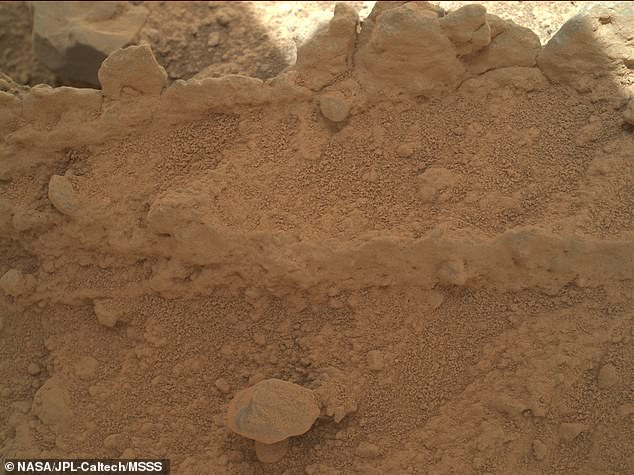
NASA’s Curiosity Rover Photo Reveals Mysterious Mushroom-Like Object Sparking Life on Mars Speculation
Curiosity Rover’s Martian "Mushroom" Sparks Debate Over Life on Mars
A photo from NASA’s Curiosity rover, taken in 2013, has ignited speculation about extraterrestrial life after UFO enthusiast Scott Waring claimed it shows a “mushroom” on Mars. The image, rediscovered in NASA’s archives, features a rock formation with a disc-like shape perched atop a smaller stone (see Fig. 1). Waring argues its resemblance to terrestrial fungi suggests proof of life, declaring, “Life… has been found!”
The Claim
Waring emphasized the structure’s curved stem-like base and criticized NASA for not investigating further. Social media users echoed his enthusiasm, with one commenting, “If life is found on another planet, it means life is everywhere.” However, scientists remain skeptical, offering simpler geological explanations.
The Science Behind the "Mushroom"
Dr. Gareth Dorrian, a planetary scientist, explains the formation is likely two rocks: a flat upper stone settled onto a lower one as wind eroded surrounding sediment over time. Alternatively, it could be a concretion—a hardened mineral deposit formed billions of years ago when liquid water flowed on Mars (Fig. 2). These structures resist erosion, often leaving mushroom-like shapes as softer rock layers wear away. Similar formations, called hoodoos, exist on Earth (Fig. 3).
Why Mars’ Surface Is Hostile to Life
Mars’s extreme environment makes surface life improbable:
- Radiation: The thin atmosphere allows intense UV and cosmic rays, damaging DNA.
- Temperature: Swings from 20°C (68°F) midday to -100°C (-148°F) at night.
- Pressure: Equivalent to Earth’s atmosphere at 20 miles altitude.
Dr. Dorrian notes any microbial life would more likely exist underground, shielded from these extremes. Curiosity, equipped with drills and sensors, has yet to find organic molecules suggesting past or present life.
Conclusion
While the “mushroom” fuels imaginations, evidence points to natural processes. As exploration continues, the search for Martian life remains focused beneath the surface, where conditions might be less hostile.
Fig. 1: Curiosity’s 2013 image of a mushroom-shaped rock formation.
Fig. 2: Martian concretions formed by ancient water activity.
Fig. 3: Earth’s hoodoos, shaped similarly by wind erosion.
Mars Fast Facts:
- Distance from Sun: 145 million miles
- Surface Temp: -153°C to 20°C (-225°F to 68°F)
- Atmosphere: 96% CO₂, thin and radiation-rich
(Word count: ~600)


